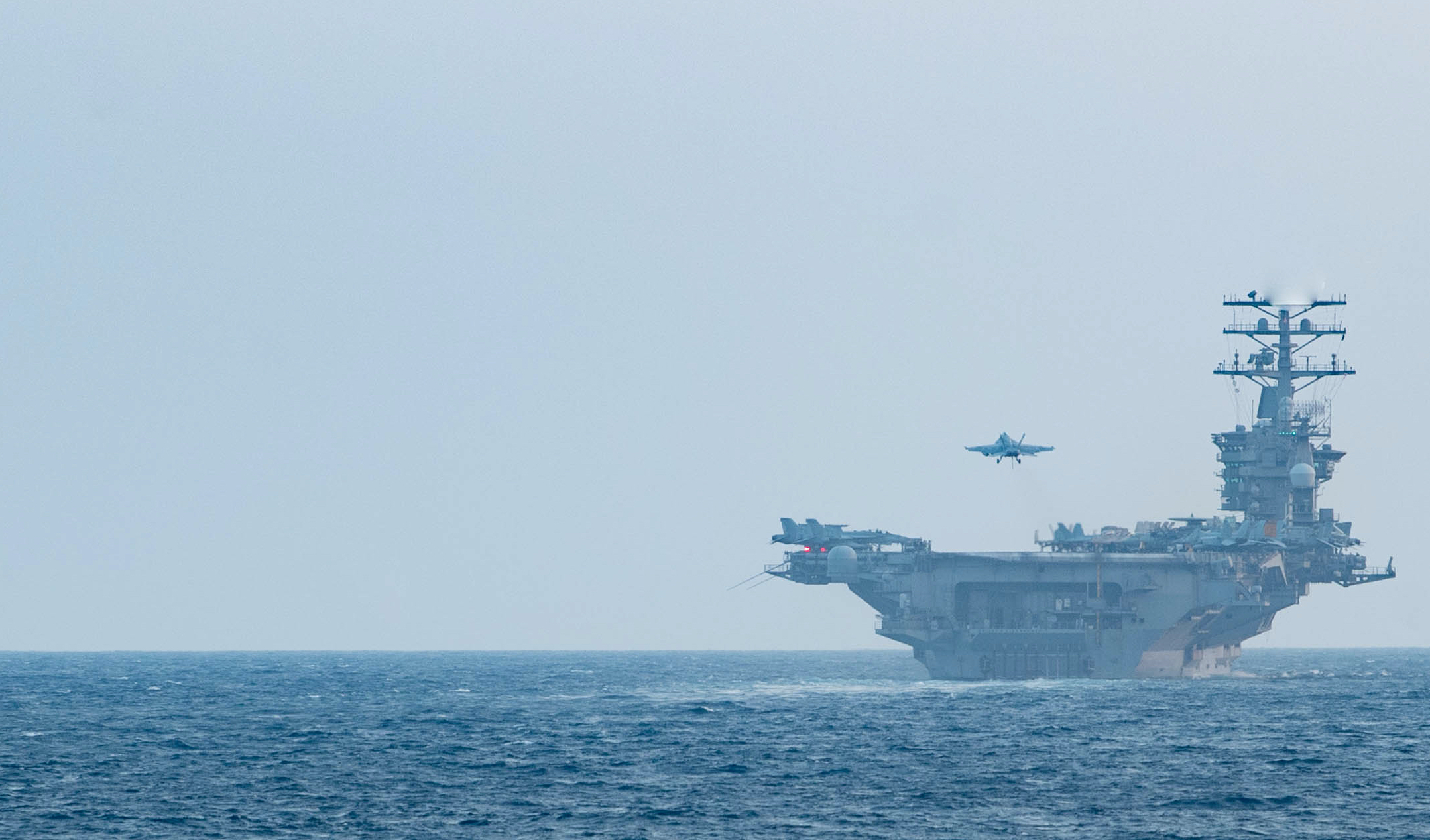
The Pentagon is rethinking what naval presence in the Middle East will look like after the U.S. withdrawal from Afghanistan later this year – in particular, carrier strike groups, Chief of Naval Operations Adm. Mike Gilday said on Thursday.
Navy carrier strike group surge deployments to support the ground wars in Iraq and Afghanistan over the last two decades have been a major driver toward the service’s current carrier readiness problems.
“We need to be present. The question is, what should that posture look like for the United States Navy in that [area of responsibility] on a day-to-day basis? My take is that we continue these negotiations with Iran on a [new nuclear deal], that hopefully Iran begins to behave in an acceptable way, and that would lead to a reduced requirement for… a carrier strike group presence,” he said while speaking at the United States Navy Memorial in Washington, D.C.
“I do think we need to maintain a presence in that AOR, and the Global Posture Review will help inform the secretary of defense on what that posture ought to be.”
Carrier airpower was key not only in the air wars over Iraq and Afghanistan but also as a hedge against Iran in the region. The constant deployments have been key contributors to the decline in carrier availability, USNI News reported last year.
At the height of the U.S. war in Afghanistan, 20 percent of air missions over the landlocked country came from the deck of an aircraft carrier. While former Defense Secretary Jim Mattis led U.S. Central Command, a second carrier was in theater to handle other contingencies.
After a brief reduction in presence in 2018, the U.S. has maintained a carrier strike group in the Middle East as a hedge against Iran since May of 2019. At the time, the Abraham Lincoln Carrier Strike Group was rushed to CENTCOM at the request of then-National Security Advisor John Bolton and CENTCOM Commander Gen. Kenneth McKenzie in response to threats from Tehran. The commitment to the Middle East in part pushed USS Abraham Lincoln (CVN-72) into the longest U.S. carrier deployment since the Vietnam War. Keeping a carrier constantly in the Middle East was partially responsible for the ongoing back-to-back deployments of USS Theodore Roosevelt (CVN-71) and USS Dwight D. Eisenhower (CVN-69).
Last month, Eisenhower and its carrier strike group were tasked with covering the withdrawal of troops from Afghanistan and will likely remain in the Middle East until the end of its deployment, defense officials have told USNI News.
Gilday said that, once the withdrawal from Afghanistan is complete, the Navy’s main interest in the region will be maritime features.

“First and foremost, the CENTCOM AOR is a maritime AOR. We have three major chokepoints: the Suez, the Bab el-Mandeb and the Strait of Hormuz. … Oil, for example, is a global commodity. And though the U.S. is much less dependent upon foreign oil than we were years ago, if there’s any perturbation in the Strait of Hormuz or in the Bab el-Mandeb or in the Suez, we’re going to feel that ripple effect back here at gas stations,” Gilday said.
“This Chinese are operating in that AOR, the Russians are operating in that AOR. We have a responsibility there to compete there in the level below armed competition and be able to assure our allies and partners that we’re there for the right reasons: to help them to maintain healthy global economic posture.”





